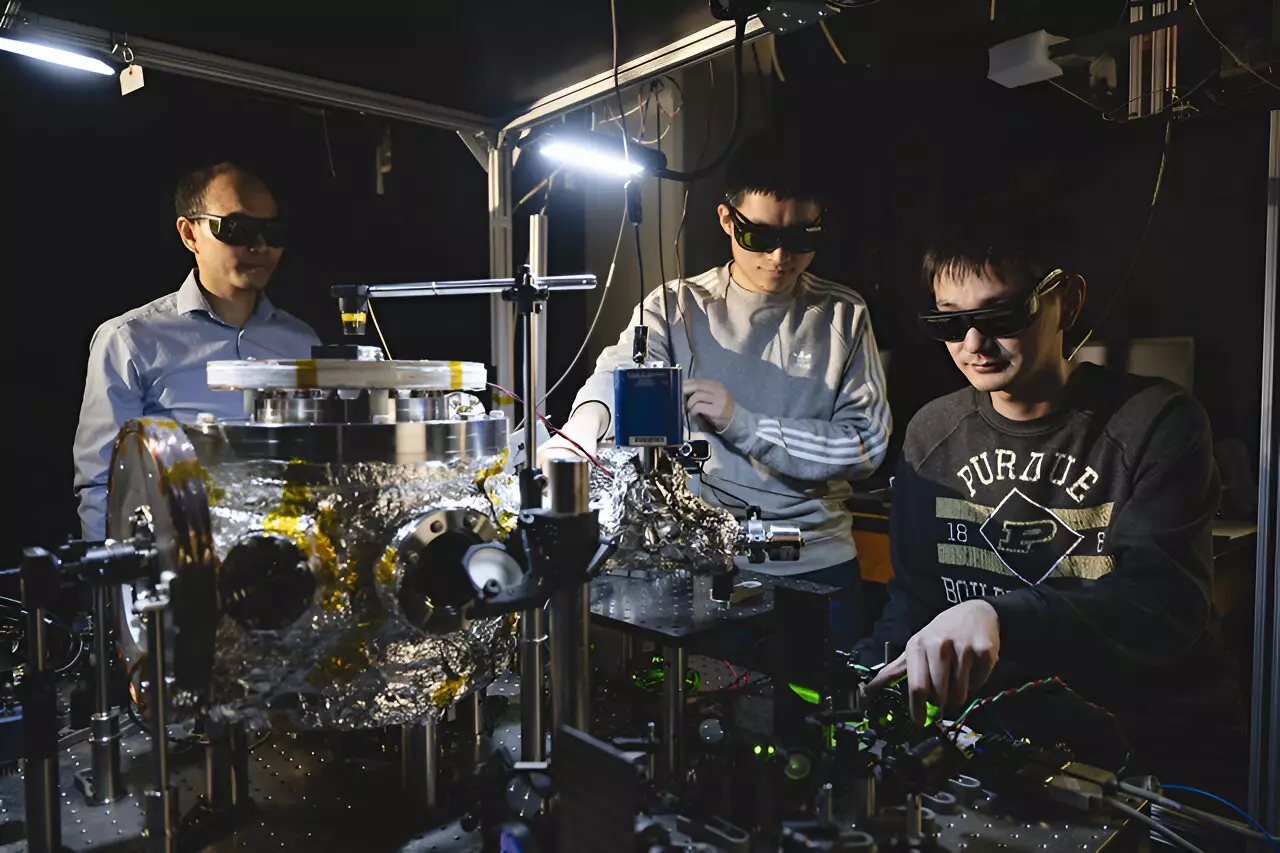In a groundbreaking experiment led by physicists at Purdue University, a significant milestone has been reached in the study of quantum systems. The researchers have managed to levitate and spin a fluorescent nanodiamond—the smallest analog of a disco ball—at astonishing speeds, revealing new insights into the world of quantum mechanics. This innovative endeavor not only pushes the boundaries of quantum physics but also introduces a fascinating method for studying the behavior of spin qubits in a controlled environment, providing a new platform for exploring the interplay between quantum mechanics and gravitational forces.
This experiment, spearheaded by Professor Tongcang Li, represents a remarkable intersection of physics and avant-garde technology. By spinning the nanodiamond at an extraordinary rate of up to 1.2 billion rotations per minute, the team has successfully observed quantum phenomena, specifically the Berry phase—a critical aspect of quantum mechanics that illustrates how the state of a quantum system evolves when subjected to cyclic processes. The findings of this study were published in the prestigious journal, Nature Communications, where reviewers hailed it as a “groundbreaking moment” for the realm of rotating quantum systems and a significant advancement in levitodynamics.
The nanodiamond, measuring approximately 750 nanometers in diameter, is not just a fascinating spectacle; it embodies complex technological achievements. Scientists produce these diamonds through a high-pressure, high-temperature synthesis process before subjecting them to high-energy electron irradiation, which creates nitrogen-vacancy color centers. This specific modification allows the diamonds to host electron spin qubits. When illuminated by a green laser, these qubits emit red light, enabling researchers to monitor and analyze their states, essentially creating a sophisticated method for studying quantum properties.
One of the primary challenges in conducting previous experiments with such nanodiamonds was maintaining their stability in a vacuum environment. The pioneering design of this setup involved using a specialized ion trap to successfully levitate the nanodiamond in a high vacuum—an unprecedented achievement. Professor Li eloquently describes the implications of their work: “Imagine tiny diamonds floating in an empty space or vacuum. Inside these diamonds, there are spin qubits that scientists can use to create precise measurements.”
Part of what makes this research noteworthy is the ability to control the rotation of the nanodiamonds at will. The research team discovered that by adjusting the driving voltage applied to the surface ion trap, they could dictate the rotation direction of the levitated diamond. This level of manipulation opens up a plethora of possibilities for experimental designs in quantum physics. For instance, in the absence of a driving signal, the diamond spins omnidirectionally, akin to a ball of yarn in motion.
The implications extend beyond laboratory curiosity. The ability to rotate diamonds with embedded spin qubits provides a platform to assess the interaction between mechanical motion and quantum spins—an essential frontier in understanding the unification of general relativity and quantum theory. Professor Li eloquently remarks, “Achieving the ability to study quantum gravity experimentally would be a tremendous breakthrough.” This breakthrough could ultimately lead to technological innovations in precision measurement and the creation of large quantum superpositions that test the limits of quantum mechanics.
Beyond the theoretical implications, the technological advancements that arise from this research have the potential to revolutionize various industries. For example, levitated nanodiamonds could function as exceptionally sensitive accelerometers and electric field sensors, enhancing navigation and communication technologies. Notably, organizations such as the US Air Force Research Laboratory are exploring the use of optically levitated nanoparticles to address critical challenges in these domains.
Purdue University boasts cutting-edge facilities, including two specialized, home-built systems for advanced research in levitated optomechanics, alongside access to shared resources at the Birck Nanotechnology Center. Such infrastructure ensures that innovative studies continue to emerge from this esteemed institution, reinforcing its position as a leader in quantum science.
The research by Tongcang Li and his team unfolds like a captivating dance, revealing a world where technology and science converge at unprecedented speeds. The levitation and manipulation of nanodiamonds not only signify a technological triumph but also echo the fundamental questions of physics—all while resembling a disco party in a vacuum. As we inch closer to understanding the quantum realm, the implications of this research could help answer some of the most profound questions regarding the nature of gravity and quantum mechanics, serving as a testament to human ingenuity and the possible futures that lie ahead in this fascinating field.


Leave a Reply